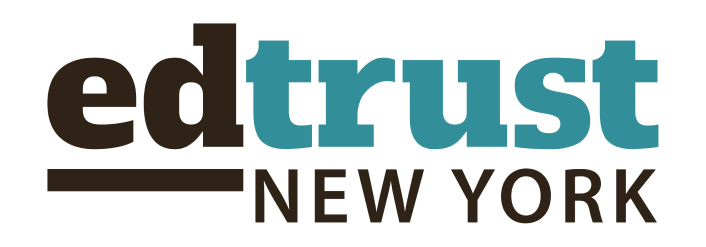Students across New York State are now engaged in the most consequential school year in generations, following three years of interrupted instruction due to the pandemic. Recent assessment data show that most New York students, particularly those of color and from low-income backgrounds, experienced significant academic setbacks, exacerbating gaps that persisted before COVID-19. New York State ranks 46th nationally in 4th grade math performance on the National Assessment of Educational Progress (NAEP). An analysis by the New York Equity Coalition reveals that less than half of all tested students in grades three through eighth are proficient in English Language Arts (ELA) and math. Since 2019, proficiency rates for students from low-income backgrounds continue to fall behind the rates of their more affluent peers in both math and ELA and Math.
Recognizing the urgency of the moment, there have been historic federal and state funding allocations for public education. Recently, in her State of the State address, Governor Kathy Hochul proposed to invest an additional $2.7 billion into Foundation Aid, which would bring the total Foundation Aid amount to more than $24 billion. Additionally, the most recent round of funding from the Elementary and Secondary School Emergency Relief (ESSER) fund, the American Rescue Plan Act (ARPA), allocated $9 billion to New York State. Despite these allocations and the urgency of the moment, an analysis by the New York Equity Coalition shows that districts across the state have spent less than 10% of their ARPA funds as of August 2022. Further, when combined with the two other rounds of previous ESSER funding, New York State ranks 49th nationally in the percentage of total ESSER funds spent (19%). While there are legitimate reasons for the pace of spending, we are concerned by the lack of urgency from state and local leaders in ensuring these funds are invested in evidence-based practices targeted to schools and students with the most need.
Last school year’s state assessment results underscore the critical need for New York State to drive resources to the students most in need of additional support to master the skills appropriate for their grade level. To help improve student learning, we encourage state leaders to prioritize the following for fiscal year 2024:
- Teacher Diversity, Recruitment, and Retention: New York State is home to one of the most diverse student populations in the country. Yet, the makeup of the state’s teacher workforce falls far short in representing the rich racial/ethnic diversity of its students, leaving many students of color without access to teachers of the same race as them. Districts can use funds to address staffing shortages and provide incentives to recruit and retain educators of color. Districts should use data to identify key staffing shortages and collect and publish school-level data annually on teacher turnover that is disaggregated by race/ethnicity. Other key strategies include:
- Provide support and incentives to hire and retain staff in schools serving higher percentages of students of color and students from low-income backgrounds and in hard-to-staff subjects.
- Create a pipeline of temporary staff and teacher aides and assistants to become certified as full-time educators, such as Grow Your Own programs.
- Invest in strategies to recruit, support, and retain educators of color and multilingual educators. This includes providing support to teachers who participated in, but not limited to, Grow Your Own programs, Teacher Opportunity Corps programs, Higher Education Opportunities programs. Strategies could also include expanding efforts like NYC Men Teach to recruit more male educators.
- Course Access, Dual Enrollment, and Graduation Support: Across New York State, students of color and from low-income backgrounds are denied access to advanced courses and dual enrollment programs that would set them on a path to postsecondary success. This moment offers an opportunity to amplify the efforts that have been made to ensure students are adequately prepared for their future. Last year, the Governor committed to improving access to dual enrollment programs. Additionally, the proposed 2024 executive budget includes $20 million in funding to support the creation of Early College High School programs and Pathways in Technology Early College High School programs and dedicating $250 million to establish high-impact tutoring programs in districts across the State to address student learning lost during the pandemic. We applaud the Governor for these historic investments, and we encourage school districts to build on the governor’s efforts by providing equitable access to dual enrollment programs and advanced coursework. Districts should also identify students at risk of not graduating and leverage additional resources to provide extra support, strategic tutoring, postsecondary planning, and other evidence-based instructional resources that prepare them for postsecondary success.
- P-20 Longitudinal Data System: New York is in need of a comprehensive system that connects statewide data from early childhood through K-12, postsecondary education, and the workforce. New York State should adopt a P-20 data system that would help leaders answer policy challenges, target resources, and better support students on their educational journey.
- Math Instruction: New York ranks 46th nationally in 4th grade math NAEP scores and saw a decline of 8 percentage points on the state assessment between the 2018-19 and 2021-22 school years. School districts should consider significant investments in math instruction across all grades, including: Evidence-based curriculum and instructional resources that focus on conceptual understanding and fluency.
- Focus on Tier 1 instruction for all students, with frequent opportunities for progress monitoring to assess and adjust instruction to meet grade-level learning goals.
- Equitable access to advanced coursework, including courses like Algebra 1.
- Professional learning opportunities for teachers that focus on differentiating instruction for diverse groups of learners.
- Provide high-impact tutoring using evidence-based practices
- Early Literacy: Third-grade reading proficiency is the most important indicator of high school graduation and career success. Without a strong foundation in reading, other efforts to improve outcomes in schools and communities across New York State are unlikely to succeed on a scale. Thirty states have passed legislation that supports the use of high-quality instructional materials that align to the science of reading, and New York State is one of the few states without such legislation. To that end, New York State school districts should consider investments in evidence-based literacy instruction aligned with the science of reading. Such investments could take many forms, including:
- Professional development for teachers, aligned with the science of reading.
- Evidence-based curriculum and other instructional resources that focus on phonics instruction and reading comprehension.
- Hiring reading specialists and coaches trained in the science of reading to provide more support to teachers and students.
- Requiring teacher preparation programs to align their programs to the science of reading.
- Focus on better Tier 1 instruction for all students, with frequent opportunities for progress monitoring to assess and adjust instruction and learning goals.
- Provide high-impact tutoring using evidence-based practices.
- Social-Emotional Learning and Overall Student Well-Being: The pandemic has had a negative impact on student mental health and districts should invest in social-emotional and mental health strategies that support the overall well-being of students, including the following:
- Districts should use new resources to ensure that high-poverty schools meet recommended student-counselor ratios and increase the number of nurses and school psychologists that are available to support at-risk students and fortify early warning systems to ensure that students who are at risk are identified in time for effective intervention.
- Schools should make a commitment to reducing exclusionary discipline by investing in restorative practices that will address underlying social-emotional issues.
- Schools should provide community-based mental health services in schools and form partnerships with community-based mental health providers, including a focus on telehealth.
These are challenging times for students, teachers, and families. New York was especially hard hit by the pandemic, which makes effective use of funding even more crucial for our state’s academic and economic recovery.
Thank you again for the opportunity to submit written testimony. We look forward to working with you to help provide a more equitable education for all New York State students.
Please contact Jeff Smink, deputy director, EdTrust-New York, at [email protected] with any questions regarding this testimony.

